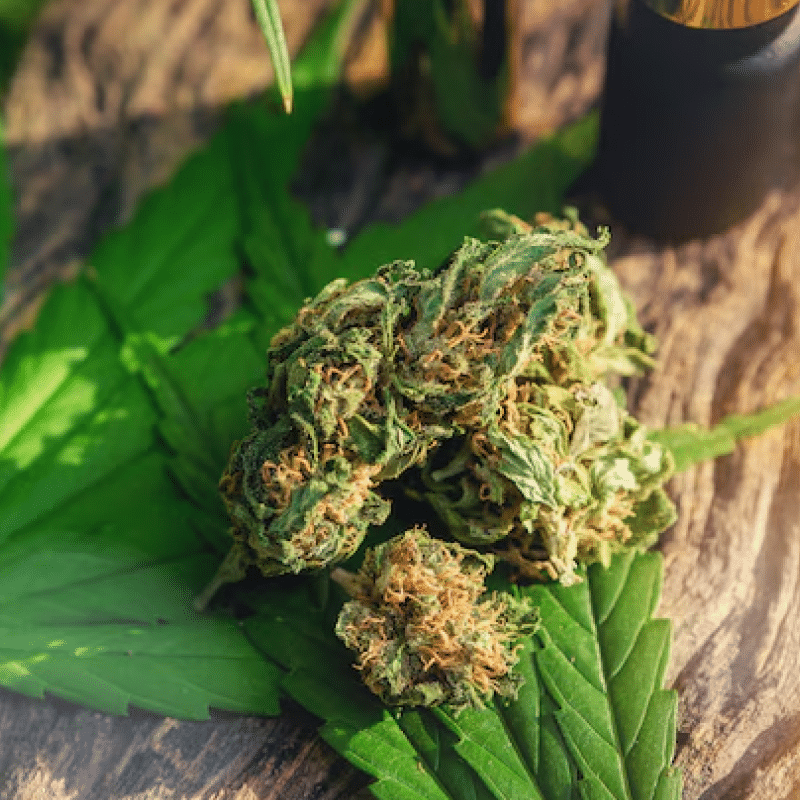Cannabis Mid-Year Check-In: What’s Really Happening in 2025?
With 2025 well underway, the cannabis industry is navigating a mix of challenges and opportunities. From market maturity and shifting consumer tastes to evolving regulations and new technological integrations, the landscape is more complex than ever. This overview breaks down the key trends shaping the industry, offering a look at how businesses can adapt to tighter regulations and leverage new growth drivers. Explore the strategies needed to thrive in a market that demands both innovation and operational rigor.

We’re over halfway through 2025—what’s going on in the cannabis industry? While this year hasn’t seen as many emerging medical or recreational markets as years past, it’s still been a year full of challenges and changes. Here’s what’s going on, and what you need to keep in mind as we close out cannabis in 2025 and move into 2026.
Major Trends: A Quick Breakdown of 2025
While 2024 was a year of consolidation and economic shifts, 2025 is poised to bring its own set of significant trends, from evolving consumer preferences to new technological advancements.
Market Maturation and Competition
Market maturation is not a new trend but rather an ongoing challenge for businesses to deal with. The exact point at which a market flips from being new to maturing is not as important as the recognition of said maturation.
California is the biggest example of challenges in a mature market: increased competition, price compression, and falling prices for wholesale cannabis. But this is a trend that plays out time and time again. For example, Oregon has been going through price compression for a while, and even newer markets like Michigan are beginning to see this.
Combating this trend is not a simple task, but patience, commitment, and a few tried and true strategies help: efficient operations, reducing overhead costs, brand differentiation in a crowded market, and complete transparency around COAs. Cultivating premium-grown and craft strains, rather than mass-producing common strains, is also a differentiator. Customers become more discerning in mature markets and seek out strains that they trust and know they can rely on.
Shifting Consumer Demographics
It’s never been more acceptable to consume cannabis. According to a report from Flowhub, 47% of Americans have “tried cannabis,” and 15% of the country identifies as a “current user” of cannabis. As the plant becomes more socially acceptable, the demographics of who consumes cannabis and what types of products they prefer shift. 1 in 3 American women consume cannabis, and nearly 30% prefer non-flower products. While cannabis flower is still the most popular type of product, the tide is shifting. So, how can you lean in and offer customers the variety they want?
Technological Advancements
In many ways, 2025 has been the year of AI, and cannabis is not exempt from this. As AI technology advances, it touches all aspects of daily life and business. Forward-thinking cannabis companies embrace this trend towards automation, understanding that more systems mean less overhead.
How can AI and automation help your company? Perhaps it’s with compliance monitoring and audit reminders to cultivate a culture of safety, or to simplify inventory. AI may be able to help with more accurate yield forecasting, while blockchain technology can increase transparency in seed-to-sale tracking.
These automations are just on the backend—AI can help enhance customer experience with e-commerce, in-store, and with digital loyalty tools.
Product Innovation and Consumer Preferences
Crowded markets need product differentiation. In addition to creating a premium product, is your brand leaning into organic growing methods? Do you take extra steps to preserve water or reduce single-use waste? Customers are more likely to purchase from brands they agree with, so don’t be afraid to share what sets you apart.
Automation can also help with dialing in consumer preferences. Customers want a personalized experience; this has been true since the dawn of retail. But with AI tools for data analytics, companies can provide a hyper-personalized experience more easily than ever. Since all dispensaries must scan customer IDs, they can offer consumers the opportunity to build a consumer profile that analyzes past purchases and buying trends, and makes tailored recommendations based on current inventory.
This is especially useful for specialized product categories; maybe one customer has a history of purchasing low-dose edibles, and a new microdosed beverage would be perfect for them. Perhaps a customer seeks out high-potency products for pain, and a fresh strain is the perfect addition to their stash cabinet.
While each customer has their own preferences, nationally, customers are leaning into prerolls for convenience, edibles to avoid smoking, and infused beverages, which are the fastest growing segment of cannabis products. This is also true for the main reasons customers turn to cannabis: pain, anxiety, and sleep. To take these national trends and turn them into personalized recommendations will set businesses apart in increasingly crowded markets.
The Impact of Tighter Regulations: A Deep Dive into Challenges and Adaptations
Facing an increasingly complex legal and political landscape, businesses today must grapple with tighter regulations that present significant challenges, yet also offer opportunities for strategic adaptation and innovation.
Federal Landscape: Continued Stalling, but Potential Shifts
There’s been a lot of back and forth in recent years about cannabis’ status at the federal level. Prohibition means that the industry faces many challenges that other industries don’t face, like the burden of IRS Tax Code 280E and banking challenges. There has been discussion about the SAFE Act to remove some of this burden, but it has repeatedly stalled out in the legislature.
Rescheduling cannabis is a hot-button topic that has been getting a lot of attention. The previous administration talked about rescheduling cannabis, but failed to move forward. There is potential for the current administration to reschedule the plant, which would remove the burden of 280E, a massive break for operators.
However, a Schedule III designation for cannabis would put the plant in the hands of major pharmaceutical companies, which may be good for research, but could be challenging for existing operators to adapt to.
State Landscape: Hemp Markets Shrink
While changes have been slow to take place at the federal level, states are continuing to refine their cannabis laws, oftentimes rolling back looser provisions.
Alabama
In July, the Alabama state legislature passed HB 445, a law that completely reshaped the hemp industry. In short, the law banned all smokable and vaporized hemp products as well as synthetic cannabinoids, placed a limit of 10 mg THC/ THCa per serving of edible, and placed the industry firmly under the control of the Alabama Alcoholic Beverage Control, which must license businesses to sell hemp. One of the biggest changes was removing the co-sale of alcohol and hemp; businesses with liquor licenses can no longer sell hemp.
Lawmakers claimed the goal was to protect children from hemp products, but operators say it will effectively destroy the hemp industry, causing significant revenue loss and increasing the cost of compliance. The law is being challenged in court by several hemp companies, but in the meantime, businesses must prepare for compliance.
These changes further limit access to the cannabis plant in a state where access is already challenging. It may serve to push consumers back onto the black market, where the product is more readily available, although not tested.
Louisiana
Alabama isn’t the only state to change its laws; in late 2024, Louisiana, a limited medical state, passed a law restricting the sale of hemp-derived cannabinoids and essentially banning the sale of THCA flower, or “smokable hemp flower,” a major blow to local businesses.
These changes highlight how quickly laws can shift on the state level, and how even established programs can be rolled back. Some states have taken steps to ban Delta-8 THC, and across the board, businesses are expected to increase security and privacy measures in the name of safety, protection, and compliance.
Operational Implications for Businesses
Unfortunately, these changes indicate that in many states, compliance is becoming more expensive. And if compliance is costly, being out of compliance is a fine many businesses can’t afford. Establishing robust internal controls for compliance is the most cost-effective way to handle this, dealing with problems before they grow. Having a support team of legal or compliance experts makes this effort easier.
Whether or not this administration reschedules cannabis could have a massive impact on companies’ access to banking, finances, and capital—but operators know better than to put the cart before the horse. This discussion has come up many times in the past several years, with no changes.
Industry Income and Growth Projections: Realism for Today's Environment
Global and U.S. Markets
Despite the challenges throughout the country, cannabis is still a growing industry. Nationally, the market is projected to reach $45 billion this year, making up most of the global cannabis value. But by 2030, the international cannabis industry is projected to reach up to $102 billion, a staggering CAGR of 18%. For businesses that can weather the storm, there is money to be made here.
Key Drivers of Growth
This astounding growth is driven by the expanse of medical and recreational markets across the country and around the world. Nascent domestic markets like New York, New Jersey, and Ohio are rapidly growing, and existing medical programs in states like Florida continue to expand. In Europe, Germany made history by legalizing possession and consumption of the plant.
All of this is indicative of a changing tide: public acceptance of the cannabis plant and a rising demand for alternative wellness products, like CBD, CBG, terpenes, and other botanicals.
Challenges Moderating Cannabis Growth in 2025
But this growth is not without its challenges. Oversupply is a common problem in established markets, which inevitably leads to price compression—but it also suggests an opportunity for operators who don’t want to grow or sell weed.
Growing weed indoors is an energy and carbon-intensive process, which creates a high amount of overhead for cultivators to deal with and creates a reputation for waste in an industry that should be earth-first.
There are the challenges that operators know so well: restricted access to banking, inconsistent quality control and dosing standards, and strict federal regulations even in areas where cannabis is sold. None of this is new to cannabis business owners, but it requires ongoing diligence to deal with.
What’s Next for Cannabis?
Don’t let the naysayers drag you down—growth in the cannabis industry is still robust and moving in the right direction. The initial excitement of the green wave has passed as the challenges of regulatory hurdles and price compression sink in, but this industry is still on the upswing.
For operators who are financially savvy and willing to try new things, cannabis presents a once-in-a-lifetime opportunity. Putting profitability and navigating market dynamics over rapid expansion is a shift away from the trends of the last decade, but it is necessary to thrive in the industry today.
Risk Management and Insurance Implications
The cannabis industry never sits still for long. Whether it’s new markets coming online or changes in an existing market, cannabis operators are well-practiced at riding the waves of turbulence, change, and uncertainty. And as the industry changes, so do the risks that business owners face.
As regulations shift, responsibilities change to keep a business in compliance. During times of financial uncertainty, it’s even more important to protect your bottom line. And as more consumers try cannabis products for the first time, the exposure of product liability becomes increasingly important to cover.
Risk management is a multi-faceted, ongoing process. One of the most important ways businesses can ensure that risks are mitigated is through a comprehensive umbrella of tailored insurance coverage. Working in this industry means there is no “one size fits all” set of insurance policies—each business needs a tailored set of policies that protect its unique risks and exposures.
This typically includes a set of standard business policies, such as general liability, property insurance, crime, and cyber insurance, as well as some cannabis-specific policies, like crop insurance for cultivation facilities, equipment insurance for manufacturers, and D&O insurance for large companies.
The best way to ensure that your business is properly protected is by working with an insurance provider that specializes in the cannabis industry. From there, it’s important to monitor the process at your business from start to finish to ensure regulatory adherence and a standard of safety. Robust internal controls help mitigate risk by reducing the likelihood of incidents at your facility, proving a culture of compliance to your insurance provider, and by dealing with potential problems the moment they arise.
Cannabis in 2025 and Beyond
It’s not easy to be in the cannabis industry. It takes time, effort, and more than a little adaptability to thrive here. But by creating a culture of compliance, you minimize your insurable and uninsurable risks and set your business up for success. Protecting your time and financial investment is non-negotiable when it comes to operating within the cannabis industry in 2025.
Protecting your cannabis company can seem confusing; however, we’re a full-service insurance brokerage working with carriers worldwide to offer you the best coverage possible. We’re here to help! Please reach out to us today by email [email protected] or calling 646-854-1093 for a customized letter or learning more about your cannabis insurance options.



